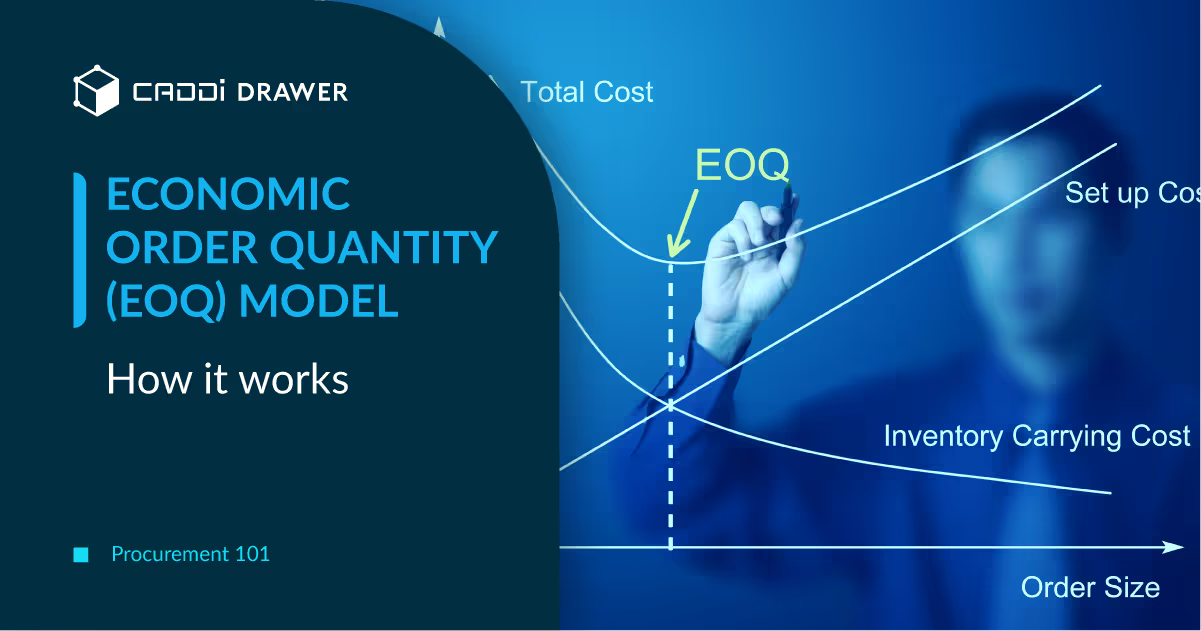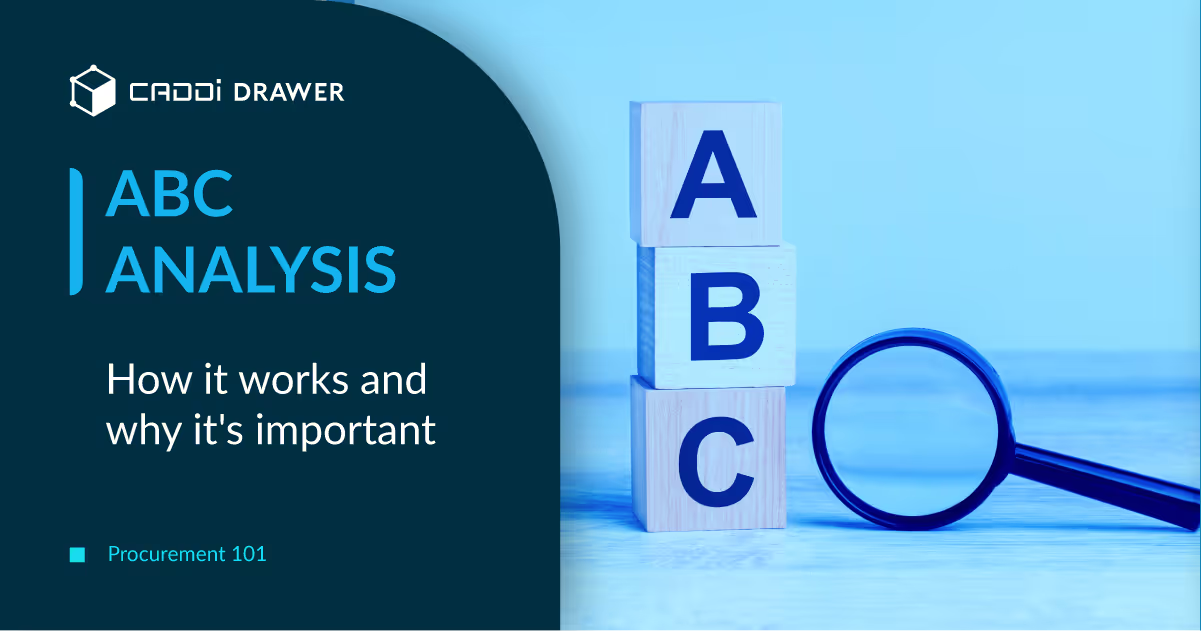Procurement 101: Supplier Diversification – Practical guide to driving it

Table of Contents

What is Supplier Diversification?
Supplier diversification is the process of reducing dependence on a single supplier or small number of suppliers by expanding the supply base and bringing on additional suppliers. This strategy has become increasingly important for companies as it provides a number of key benefits:
- Reduces supply risk – Relying on a single supplier creates significant risk if that supplier experiences a disruption. Spreading spend across multiple suppliers reduces this concentration risk.
- Increases supply security – With multiple suppliers, the loss of any one supplier has less impact and can be more easily managed. A broader supply base increases overall supply security.
- Lowers costs – Additional competition creates opportunities to negotiate and lower costs. Spreading spend creates more supplier options.
- Improves quality & innovation – More suppliers create more competition and opportunities for better pricing, quality, delivery, technology, and innovation.
- Enhances scalability – With only one supplier, it can be difficult to scale up or down. Multiple suppliers offer more flexibility.
- Provides bargaining power – More alternatives give the buying company more leverage in negotiations with suppliers.
The process of supplier diversification allows companies to create a robust supply chain that minimizes risk while driving value.
Assess Current Supplier Portfolio
The first step in implementing supplier diversification is to map out your current supplier portfolio. This will allow you to understand your current supplier relationships, risks, and dependencies.
- Make a list of all suppliers you currently use for materials, components, services, etc. Include details like spend, length of relationship, and performance. This gives you an overview of your entire supply base.
- Identify sole source suppliers or single country suppliers. Relying on one supplier or country introduces risk if that source is disrupted.
- Note critical components or materials from suppliers. If a supplier provides something you can’t easily replace, you have a dependency that needs backup plans.
- Look at supplier turnover to identify unstable relationships. Frequent changes in suppliers can make it hard to stabilize quality or costs.
- Document site locations for suppliers. Having multiple suppliers located in one geographic area exposes you to regional events.
- Review supplier financials and capabilities. Small suppliers may struggle with growing volumes or fluctuations in demand.
Assembling details on current suppliers gives you the full picture. You can then analyze risks, dependencies, weaknesses, and gaps that diversification aims to address.
Determine Optimal Supplier Mix
When determining the optimal mix of suppliers, it’s important to weigh the pros and cons of having a single supplier versus multiple suppliers for a given product or service.
Pros of single supplier
- Build deeper relationship and can negotiate better contract terms
- Simplified purchasing process from procurement to payment
- Supplier has full focus on your needs and business
- Lower coordination costs
Cons of single supplier
- Little negotiating leverage or competition
- High risk if supplier has operational issues
- Lack of flexibility if you need sudden increase in orders
Pros of multiple suppliers
- Increased competition prevents price gouging
- Reduce risk of production/delivery disruption
- Optionality provides more flexibility
- Chance to test products from different vendors
Cons of multiple suppliers
- Higher costs to manage more supplier relationships
- Complex purchasing and order tracking
- Harder to build close ties or negotiate a volume deal
When deciding between one vs. multiple suppliers, consider factors like:
- Importance of the purchased item – Use multiple suppliers for mission critical or high value items
- Switching costs – Single source if its resource intensive to qualify new suppliers
- Expected order variability – Multiple sources if your demand fluctuates a lot
- Supplier capacity constraints – Add suppliers if volumes exceed one supplier’s production capabilities
- Technology uncertainty – Dual source can allow adopting new innovations faster
The optimal balance depends on your specific situation. Periodically reassess as circumstances evolve.
Identify Potential New Suppliers
When looking to diversify your supplier base, a critical step is identifying potential new suppliers to partner with. There are several effective strategies for sourcing new suppliers.
Networking and Industry Events: Attend trade shows, conferences, and networking events to connect with suppliers in your industry. Talk to your peers about suppliers they work with. Exchange ideas and ask for referrals.
Online Supplier Directories: Search relevant supplier directories like ThomasNet to find suppliers providing the products/services you need. Filter by location, capabilities, certifications, etc.
Request for Information (RFI): Issue an RFI to collect basic info from potential suppliers. Clearly explain your requirements. Review RFI responses to create a list of suppliers to further evaluate.
Request for Quotation (RFQ): Send an RFQ to get specific pricing and delivery information from shortlisted suppliers. Provide detailed specifications and quantities. Compare quotes to identify the best value for money.
Web Research: Search for suppliers online using relevant keywords. Browse through supplier websites to learn about their capabilities, clients, locations, and more.
Trade Publications: Check industry trade publications and directories for listings of suppliers, specialty firms, and service providers.
Business Associations: Local business associations like chambers of commerce may provide lists of regional suppliers. Relevant industry associations are also great for finding suppliers.
Cast a wide net when sourcing potential suppliers. Leverage these strategies to connect with new suppliers that meet your requirements and could be a good fit for your organization. Maintain a organized list of prospects to evaluate further.
We have provided a detailed explanation of supplier development in the article below.
Supplier Development – Practical Guide to Leveraging Technology
Following that, supplier selection, evaluation, onboarding, and relationship management become crucial. These topics are covered in the articles below, so please refer to them as needed.
- Supplier Evaluation – How it works and why it’s important
- Supplier Selection – Practical Guide to Leveraging Digitalization
- Supplier Onboarding – A process often overlooked but crucial to competitiveness
- Supplier Management – What it is & how to execute it
Balance Supplier Portfolio
Once you have onboarded new suppliers and begun working with them, it’s important to continuously balance your supplier portfolio to avoid overdependence on any single supplier. Here are some tips:
- Gradual Transition: Gradually transition volume to new suppliers as they demonstrate reliability and quality. Avoid shifting all volume at once.
- Ideal Distribution: Aim for an ideal distribution among suppliers so that no single supplier has more than 30-40% of your business. This mitigates risk.
- Proactive Reallocation: If one supplier is underperforming or poses risks, proactively move volume to alternate suppliers to reduce dependence.
- Regular Monitoring: Monitor supplier performance metrics regularly and make small adjustments to volume distribution as needed over time.
- Avoid Complacency: Beware of becoming complacent with existing supplier relationships. Continuous balancing keeps partnerships healthy.
- Optimal Supplier Count: Adding too many suppliers can become administratively burdensome, so find the right balance for your needs.
- Smooth Transitions: Work closely with incumbent suppliers if transitioning volume to ensure a smooth process and avoid disruptions.
- Diversification Benefits: Overdependence on a single supplier makes you vulnerable to their cost increases, quality issues, delivery failures or financial problems. Proactively diversify.
- Contingency Planning: If a key supplier goes out of business, having alternatives already lined up allows you to adjust quickly.
Continuously balancing volume across suppliers takes work, but reduces risk and provides flexibility long-term. Monitor regularly and make incremental shifts to achieve your optimal mix.
Continuously Review
Ongoing evaluation is essential for maintaining an optimal supplier portfolio over time. As business needs and market conditions evolve, it’s important to continuously monitor supplier performance and relationships.
Some tips for optimizing your supplier portfolio on an ongoing basis:
- Review KPIs and SLAs regularly to ensure suppliers are meeting expectations for cost, quality, delivery, technology etc. Look for any negative trends.
- Assess changes in suppliers’ capabilities, capacities, strategies, and viability. Stay informed about developments affecting their businesses.
- Re-evaluate the competitive landscape and availability of alternative suppliers on a periodic basis. New players may emerge over time.
- Maintain open communication with existing suppliers about upcoming needs and shifts. Collaborate on ways to improve the relationship.
- Routinely validate that your supplier portfolio aligns with overall procurement strategy and business objectives. Adjust mix accordingly.
- Perform a thorough reassessment of all suppliers at least once a year. Consider redistributing spend based on results.
- Plan for contingencies should a key supplier exit the market or have disruption. Nurture secondary sources.
Revisiting your supplier portfolio periodically and making data-driven tweaks enables optimization, risk mitigation, and alignment with evolving needs. The ideal mix will change over time – maintain flexibility to shift directions.
Conclusion
This guide has outlined practical steps to assess your current supplier portfolio, determine optimal targets, identify and evaluate new suppliers, onboard suppliers smoothly, manage relationships, and continuously review your evolving ecosystem.
The benefits of thoughtful, deliberate supplier diversification are immense. A diverse, resilient supply base fuels innovation, resilience, and competitive advantage. It unlocks more value, capability and knowledge. With an optimized, multi-supplier approach, you gain flexibility, continuity and strategic optionality.
Taken step-by-step, diversification is an achievable journey that will strengthen your business as markets shift. By diversifying, you prepare your organization to capitalize on change, drive breakthroughs and stay ahead of the curve.
It should be noted that, in contrast to supplier diversification, there may also be instances where supplier consolidation is required. I have provided an explanation of this approach in the article below, so please refer to it if you find it relevant.
Supplier Consolidation – Practical steps, challenges and solutions
What is Supplier Diversification?
Supplier diversification is the process of reducing dependence on a single supplier or small number of suppliers by expanding the supply base and bringing on additional suppliers. This strategy has become increasingly important for companies as it provides a number of key benefits:
- Reduces supply risk – Relying on a single supplier creates significant risk if that supplier experiences a disruption. Spreading spend across multiple suppliers reduces this concentration risk.
- Increases supply security – With multiple suppliers, the loss of any one supplier has less impact and can be more easily managed. A broader supply base increases overall supply security.
- Lowers costs – Additional competition creates opportunities to negotiate and lower costs. Spreading spend creates more supplier options.
- Improves quality & innovation – More suppliers create more competition and opportunities for better pricing, quality, delivery, technology, and innovation.
- Enhances scalability – With only one supplier, it can be difficult to scale up or down. Multiple suppliers offer more flexibility.
- Provides bargaining power – More alternatives give the buying company more leverage in negotiations with suppliers.
The process of supplier diversification allows companies to create a robust supply chain that minimizes risk while driving value.
Assess Current Supplier Portfolio
The first step in implementing supplier diversification is to map out your current supplier portfolio. This will allow you to understand your current supplier relationships, risks, and dependencies.
- Make a list of all suppliers you currently use for materials, components, services, etc. Include details like spend, length of relationship, and performance. This gives you an overview of your entire supply base.
- Identify sole source suppliers or single country suppliers. Relying on one supplier or country introduces risk if that source is disrupted.
- Note critical components or materials from suppliers. If a supplier provides something you can’t easily replace, you have a dependency that needs backup plans.
- Look at supplier turnover to identify unstable relationships. Frequent changes in suppliers can make it hard to stabilize quality or costs.
- Document site locations for suppliers. Having multiple suppliers located in one geographic area exposes you to regional events.
- Review supplier financials and capabilities. Small suppliers may struggle with growing volumes or fluctuations in demand.
Assembling details on current suppliers gives you the full picture. You can then analyze risks, dependencies, weaknesses, and gaps that diversification aims to address.
Determine Optimal Supplier Mix
When determining the optimal mix of suppliers, it’s important to weigh the pros and cons of having a single supplier versus multiple suppliers for a given product or service.
Pros of single supplier
- Build deeper relationship and can negotiate better contract terms
- Simplified purchasing process from procurement to payment
- Supplier has full focus on your needs and business
- Lower coordination costs
Cons of single supplier
- Little negotiating leverage or competition
- High risk if supplier has operational issues
- Lack of flexibility if you need sudden increase in orders
Pros of multiple suppliers
- Increased competition prevents price gouging
- Reduce risk of production/delivery disruption
- Optionality provides more flexibility
- Chance to test products from different vendors
Cons of multiple suppliers
- Higher costs to manage more supplier relationships
- Complex purchasing and order tracking
- Harder to build close ties or negotiate a volume deal
When deciding between one vs. multiple suppliers, consider factors like:
- Importance of the purchased item – Use multiple suppliers for mission critical or high value items
- Switching costs – Single source if its resource intensive to qualify new suppliers
- Expected order variability – Multiple sources if your demand fluctuates a lot
- Supplier capacity constraints – Add suppliers if volumes exceed one supplier’s production capabilities
- Technology uncertainty – Dual source can allow adopting new innovations faster
The optimal balance depends on your specific situation. Periodically reassess as circumstances evolve.
Identify Potential New Suppliers
When looking to diversify your supplier base, a critical step is identifying potential new suppliers to partner with. There are several effective strategies for sourcing new suppliers.
Networking and Industry Events: Attend trade shows, conferences, and networking events to connect with suppliers in your industry. Talk to your peers about suppliers they work with. Exchange ideas and ask for referrals.
Online Supplier Directories: Search relevant supplier directories like ThomasNet to find suppliers providing the products/services you need. Filter by location, capabilities, certifications, etc.
Request for Information (RFI): Issue an RFI to collect basic info from potential suppliers. Clearly explain your requirements. Review RFI responses to create a list of suppliers to further evaluate.
Request for Quotation (RFQ): Send an RFQ to get specific pricing and delivery information from shortlisted suppliers. Provide detailed specifications and quantities. Compare quotes to identify the best value for money.
Web Research: Search for suppliers online using relevant keywords. Browse through supplier websites to learn about their capabilities, clients, locations, and more.
Trade Publications: Check industry trade publications and directories for listings of suppliers, specialty firms, and service providers.
Business Associations: Local business associations like chambers of commerce may provide lists of regional suppliers. Relevant industry associations are also great for finding suppliers.
Cast a wide net when sourcing potential suppliers. Leverage these strategies to connect with new suppliers that meet your requirements and could be a good fit for your organization. Maintain a organized list of prospects to evaluate further.
We have provided a detailed explanation of supplier development in the article below.
Supplier Development – Practical Guide to Leveraging Technology
Following that, supplier selection, evaluation, onboarding, and relationship management become crucial. These topics are covered in the articles below, so please refer to them as needed.
- Supplier Evaluation – How it works and why it’s important
- Supplier Selection – Practical Guide to Leveraging Digitalization
- Supplier Onboarding – A process often overlooked but crucial to competitiveness
- Supplier Management – What it is & how to execute it
Balance Supplier Portfolio
Once you have onboarded new suppliers and begun working with them, it’s important to continuously balance your supplier portfolio to avoid overdependence on any single supplier. Here are some tips:
- Gradual Transition: Gradually transition volume to new suppliers as they demonstrate reliability and quality. Avoid shifting all volume at once.
- Ideal Distribution: Aim for an ideal distribution among suppliers so that no single supplier has more than 30-40% of your business. This mitigates risk.
- Proactive Reallocation: If one supplier is underperforming or poses risks, proactively move volume to alternate suppliers to reduce dependence.
- Regular Monitoring: Monitor supplier performance metrics regularly and make small adjustments to volume distribution as needed over time.
- Avoid Complacency: Beware of becoming complacent with existing supplier relationships. Continuous balancing keeps partnerships healthy.
- Optimal Supplier Count: Adding too many suppliers can become administratively burdensome, so find the right balance for your needs.
- Smooth Transitions: Work closely with incumbent suppliers if transitioning volume to ensure a smooth process and avoid disruptions.
- Diversification Benefits: Overdependence on a single supplier makes you vulnerable to their cost increases, quality issues, delivery failures or financial problems. Proactively diversify.
- Contingency Planning: If a key supplier goes out of business, having alternatives already lined up allows you to adjust quickly.
Continuously balancing volume across suppliers takes work, but reduces risk and provides flexibility long-term. Monitor regularly and make incremental shifts to achieve your optimal mix.
Continuously Review
Ongoing evaluation is essential for maintaining an optimal supplier portfolio over time. As business needs and market conditions evolve, it’s important to continuously monitor supplier performance and relationships.
Some tips for optimizing your supplier portfolio on an ongoing basis:
- Review KPIs and SLAs regularly to ensure suppliers are meeting expectations for cost, quality, delivery, technology etc. Look for any negative trends.
- Assess changes in suppliers’ capabilities, capacities, strategies, and viability. Stay informed about developments affecting their businesses.
- Re-evaluate the competitive landscape and availability of alternative suppliers on a periodic basis. New players may emerge over time.
- Maintain open communication with existing suppliers about upcoming needs and shifts. Collaborate on ways to improve the relationship.
- Routinely validate that your supplier portfolio aligns with overall procurement strategy and business objectives. Adjust mix accordingly.
- Perform a thorough reassessment of all suppliers at least once a year. Consider redistributing spend based on results.
- Plan for contingencies should a key supplier exit the market or have disruption. Nurture secondary sources.
Revisiting your supplier portfolio periodically and making data-driven tweaks enables optimization, risk mitigation, and alignment with evolving needs. The ideal mix will change over time – maintain flexibility to shift directions.
Conclusion
This guide has outlined practical steps to assess your current supplier portfolio, determine optimal targets, identify and evaluate new suppliers, onboard suppliers smoothly, manage relationships, and continuously review your evolving ecosystem.
The benefits of thoughtful, deliberate supplier diversification are immense. A diverse, resilient supply base fuels innovation, resilience, and competitive advantage. It unlocks more value, capability and knowledge. With an optimized, multi-supplier approach, you gain flexibility, continuity and strategic optionality.
Taken step-by-step, diversification is an achievable journey that will strengthen your business as markets shift. By diversifying, you prepare your organization to capitalize on change, drive breakthroughs and stay ahead of the curve.
It should be noted that, in contrast to supplier diversification, there may also be instances where supplier consolidation is required. I have provided an explanation of this approach in the article below, so please refer to it if you find it relevant.
Supplier Consolidation – Practical steps, challenges and solutions
Ready to see CADDi Drawer in action? Get a personalized demo.
Subscribe to our Blog!
Related Resources












.svg)



.svg)
.svg)
.svg)


